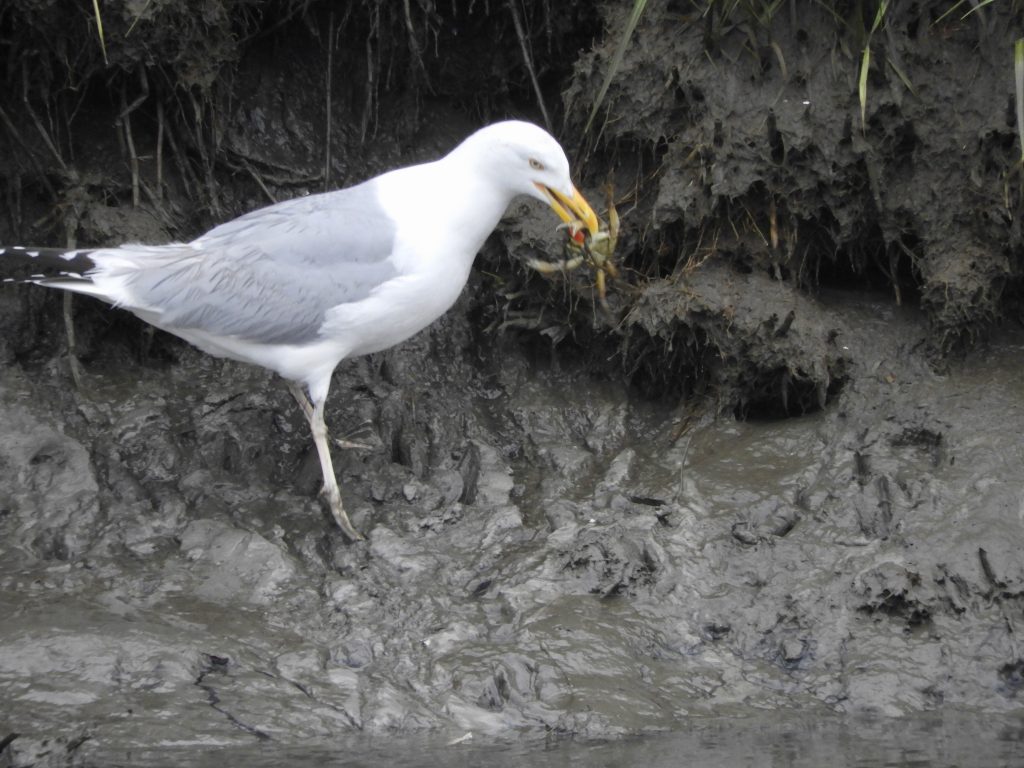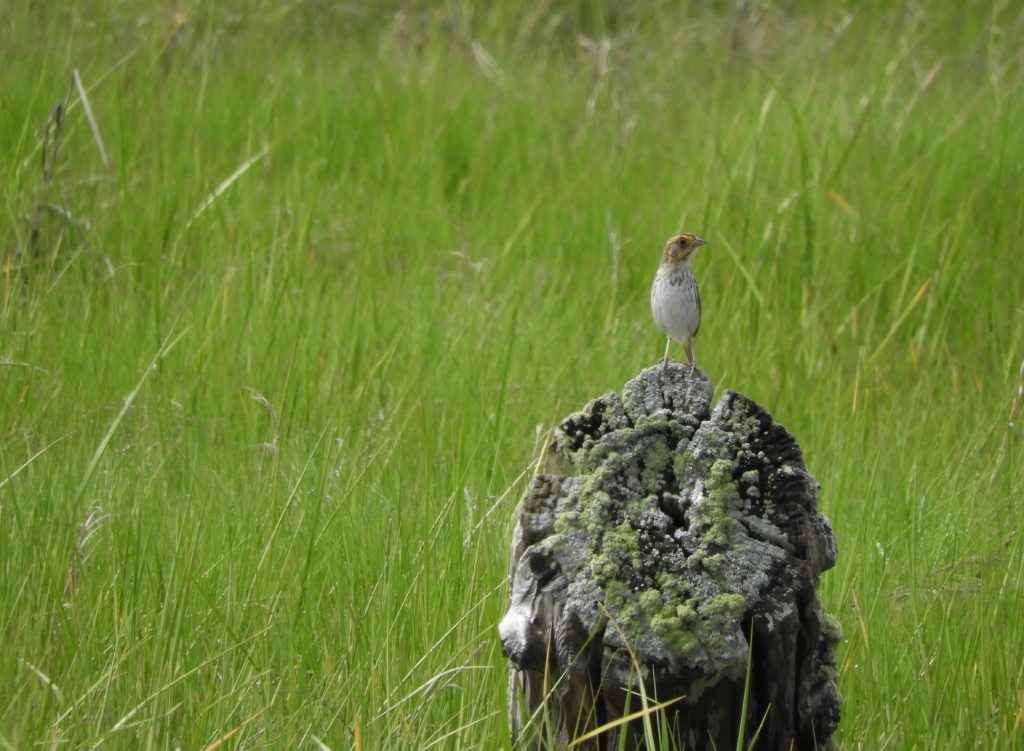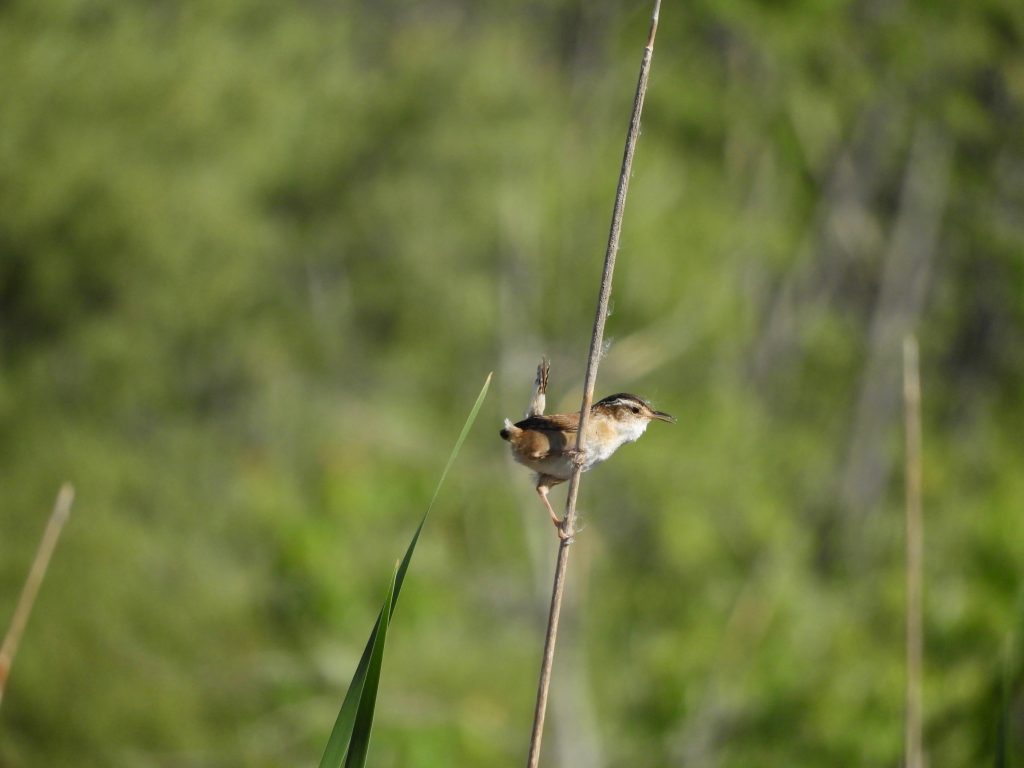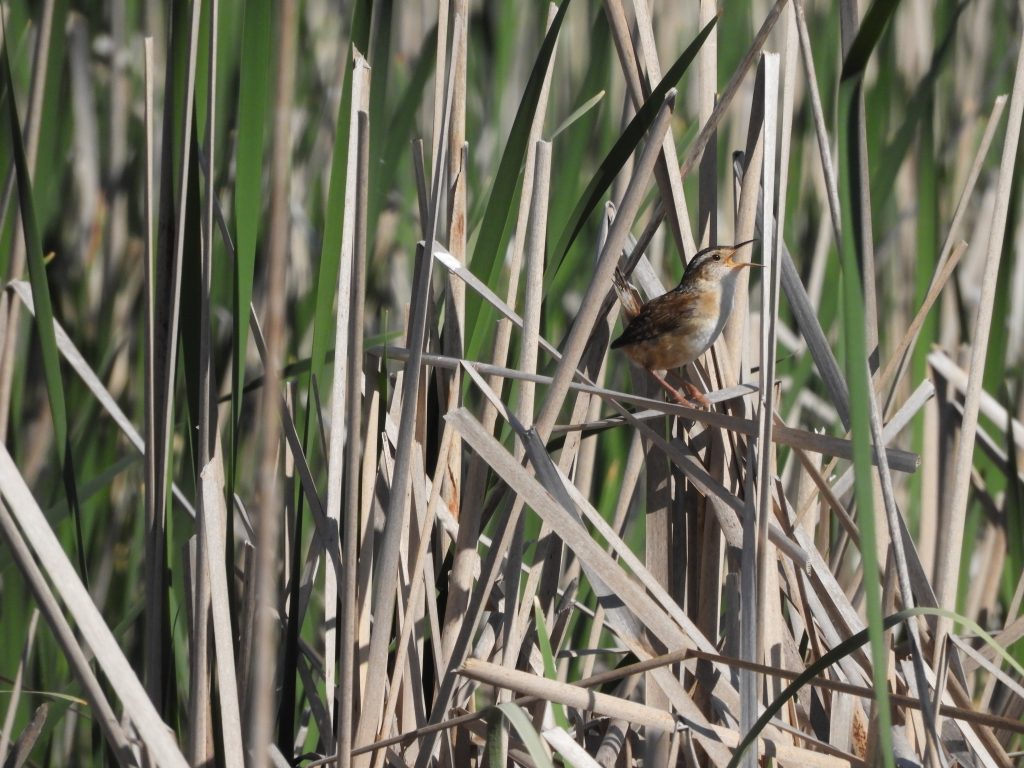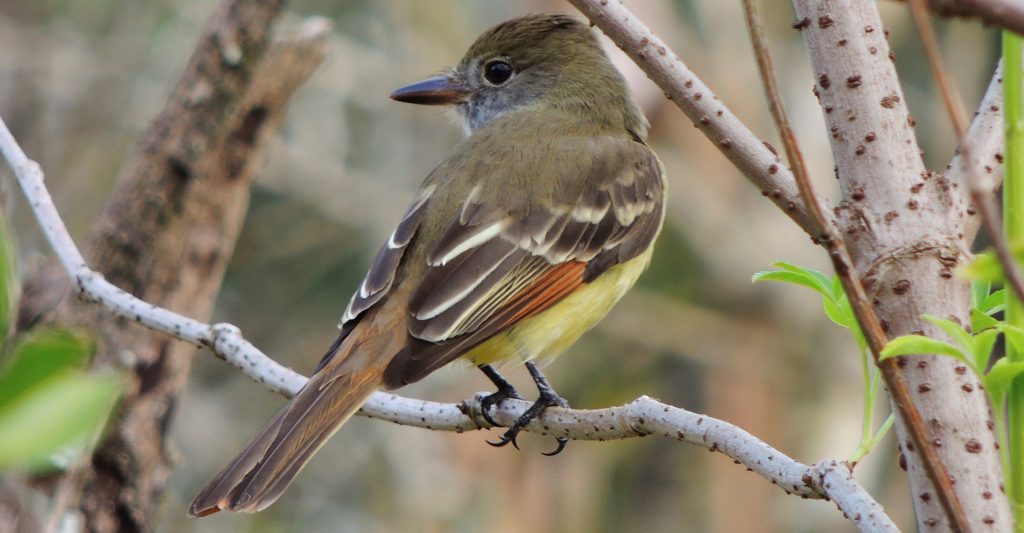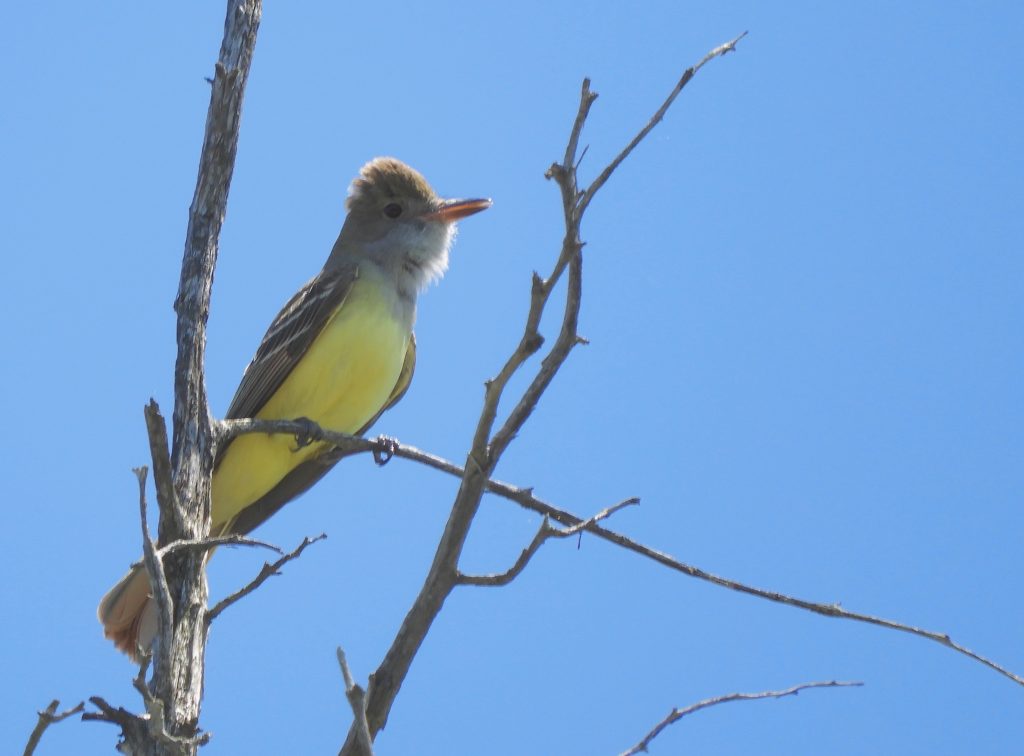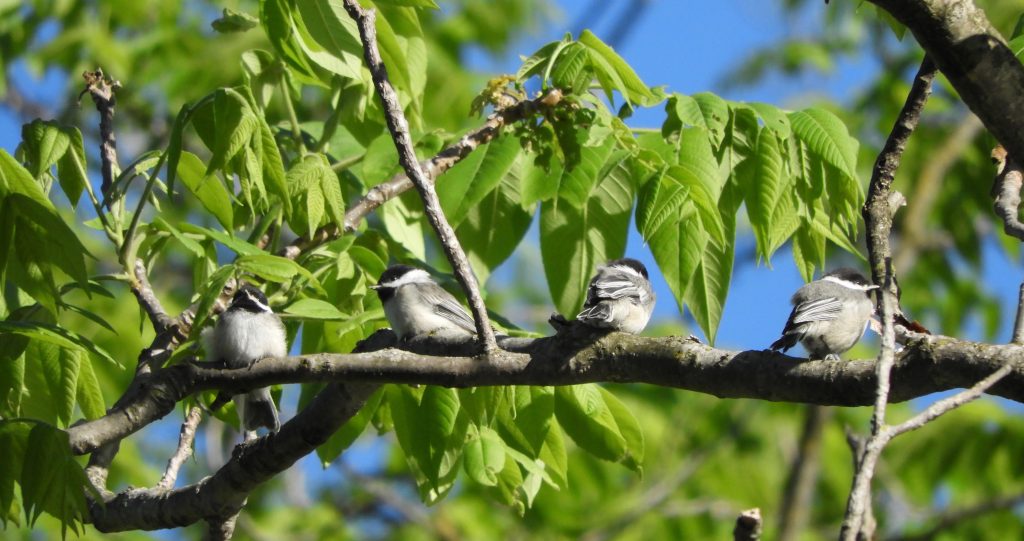Royal Botanical Gardens. Hendrie Valley, Burlington. ON. June 22 2022. On a day forecasted to be a scorcher, I did a quick and early hike of the length of the valley looking for better evidence of certain breeding birds. This was as part of my data-gathering efforts for the Ontario Breeding Bird Atlas.
I’m particularly interested in spotting higher levels of breeding evidence for Green Herons and Yellow-billed Cuckoos. I’m pretty sure the herons nest somewhere along the creek and I’ve watched a pair of cuckoos that seemed well settled in. For the record I didn’t see either species today, but I did happen upon a surprise colony of Cliff Swallows.
The valley is crossed by a lofty road bridge, the supporting piers of which are enjoyed as wide canvasses by spray-paint artists. Those decorators’ reach is about 3 meters at best, but some 30 or 40 metres above them, where the piers meet the road deck, Cliff Swallows have built their gourd-shaped nests. Their nests are constructed of mud, and adhere, largely by the grace of God, to the underside of concrete bridge decks and ledges. Here they’re using a road bridge, which evidently works well for them, but railway bridges with all of their attendant vibration are high-risk nest sites. Collapse and disintegration of the nests are an unhappy fact of life and death for the species.
Cliff Swallows are considered common, yet I don’t see them very often, probably because of their rather preferred habitat. Originally, they were birds of the western mountains, they have spread east and are adapting to man-made structures that substitute for steep canyon walls with overhangs.
Today’s colony is the third that I know of within my 10Km.X10Km. atlas square. And I probably wouldn’t have noticed it had it not been for a lively group of swallows, mostly adults as far as I could tell, alighting along the water’s edge and apparently picking at the soft mud. Adults are distinctive for having a bright white or cream triangle on the forehead, like a headlight. It seemed to be a social gathering with much wing fluttering and apparently brief, good-natured tussles. I tried for photographs but my results were disappointing, too gloomy or, more likely, too much handshake, but here’s one, for the record…..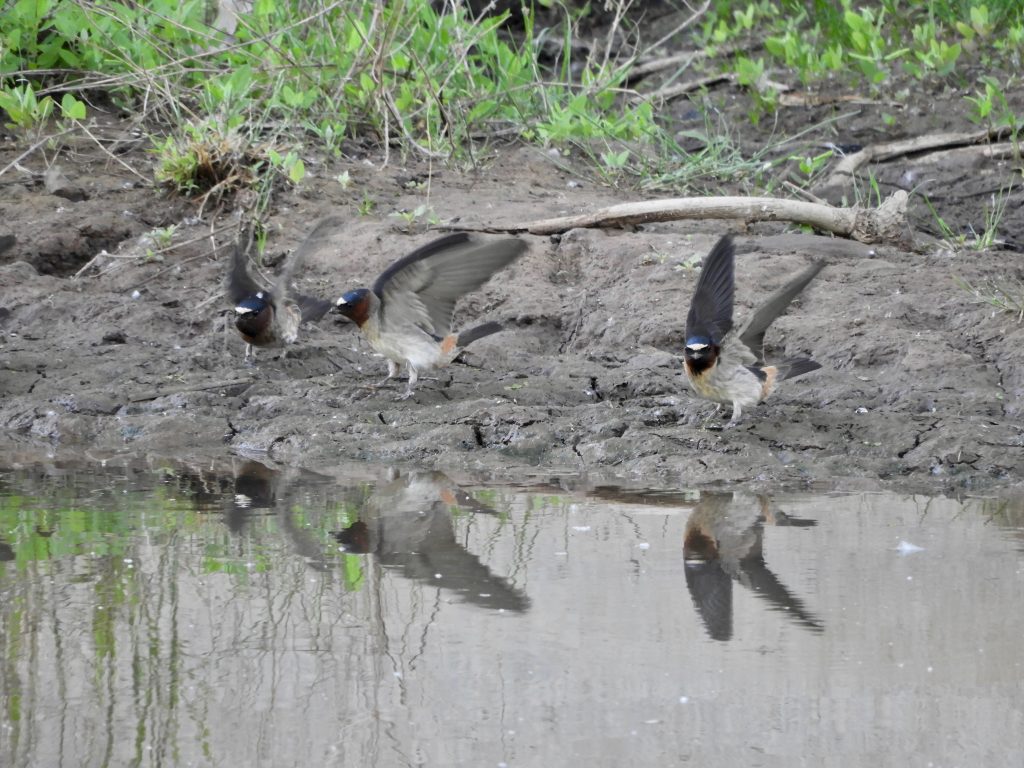
 Scarborough Marsh, Saco, Maine. June 8 2022. I spent a week in early June birding with Dan, my friend from British Columbia. We travelled to Maine, heading first (with some good birding along the way) through Quebec, Vermont and New Hampshire. Dan had a handful of must-see birds including Bicknell’s Thrush (which led us into a very obscure corner of New Hampshire – without success) and Atlantic Puffin (offshore from Boothbay Harbor Maine. With success). But one other bird species had special appeal, the Saltmarsh Sparrow. It is an uncommon bird of Atlantic salt-marshes and we were in the right part of Maine to find it.
Scarborough Marsh, Saco, Maine. June 8 2022. I spent a week in early June birding with Dan, my friend from British Columbia. We travelled to Maine, heading first (with some good birding along the way) through Quebec, Vermont and New Hampshire. Dan had a handful of must-see birds including Bicknell’s Thrush (which led us into a very obscure corner of New Hampshire – without success) and Atlantic Puffin (offshore from Boothbay Harbor Maine. With success). But one other bird species had special appeal, the Saltmarsh Sparrow. It is an uncommon bird of Atlantic salt-marshes and we were in the right part of Maine to find it.